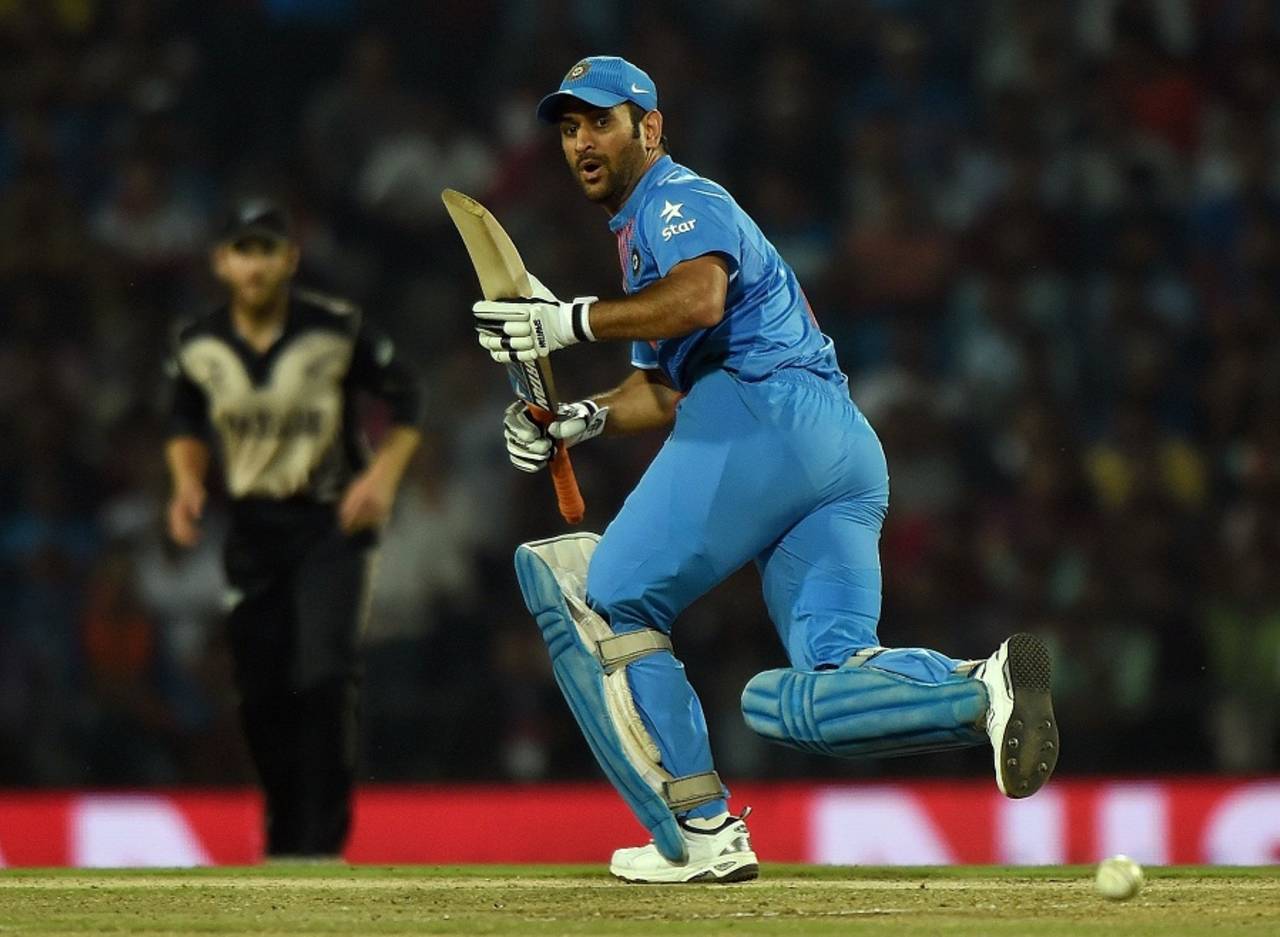The Dhoni steal
The Indian captain's sprint to seal victory against Bangladesh captured everything pivotal to his game
Sharan MR
24-Mar-2016

On the double: the hard-run two is central to MS Dhoni's limited-overs batting • AFP
Among the most beautiful sights on today's cricket field - one to rival Ashwin's lovely loop, or a Mahmudullah one-kneed cover drive - is the Dhoni steal. Picture this: he dabs a ball wide of the man at sweeper-cover and takes off. There really is only about one and one-fourths for the striker. You know it as soon as the ball leaves the bat; so does the bowler, the non-striker and, even, as it turns out, the hapless fielder, who swoops down on the ball and fires a return. But Dhoni doesn't. Strangely, nor does his body, because it just ran two.
The sight of Dhoni powering down a cricket pitch - pads on, helmet often cast disdainfully aside, bat swinging like a boatman's oars - gets one's adrenaline pumping like little else: one can feel his hamstring throb, the shocked wind in his wake. Part of Dhoni's allure is the contradictory nature of the whole thing. He doesn't have the typical runner's body - not for him are the wiry frame, the lean, long legs of an Usain Bolt. Instead, Dhoni is a cheeky, big man - never one, at first glance, to give the sense of being fleet-footed; yet, he thunders and gallops and steals. Watch him pirouette as he comes back for the second: it's the closest his batting will ever come to embody grace of any sort.
The stolen two extends beyond the aesthetics of the act: it is the centrepiece of Dhoni's limited-overs batting. It often allows him to score at better than a run a ball by taking almost no risk. The game is played on his terms, the bowler has got nothing on him - no edges, no just-misses, it's his game. This mindset serves him really well in the 50-over game; it sometimes lets him down in the T20 arena, though, where a little more risk may be called for. Indeed, arguably, in the game against Bangladesh, he could have done better: he came in with five overs to go and six wickets in hand. He ended up with 13 off 12 balls, not out. Dhoni's overall international T20 numbers aren't anywhere as great as his ODI feats: an average of 34 is good, a strike rate of 120 is a shade higher than Jacques Kallis (at 119).
The last-ball heist against Bangladesh captured, in a single, deliberate yet hare-footed sprint, everything pivotal to Dhoni's game. With a quickish Hardik Pandya bowling, the decision to stand without right glovel on is a brave one, emblematic at once of a calculating mind and some chutzpah.
The sprint itself is very Dhoni - I think it was Harsha Bhogle who said Dhoni had to be the fastest over 22 yards in modern cricket. Turns out he is even quicker over 15. And finally, the decision to run to the stumps where many others would have chosen to have a (riskier) shy - Dhoni ran because he wanted to be in control till the very end. In a sense, the sprint was a microcosm of Dhoni's world - don't let go until you absolutely have to. That's how he chases down totals. He controls the game, taking it almost deliberately down to the wire until it's just him and another man. And then, Dhoni backs himself to unleash his inner beast. It is risky, sometimes foolish, but supremely entertaining and completely his own.
Sharan MR is a PhD scholar at Harvard and the author of the novel, Blue (Harper Collins, 2015)